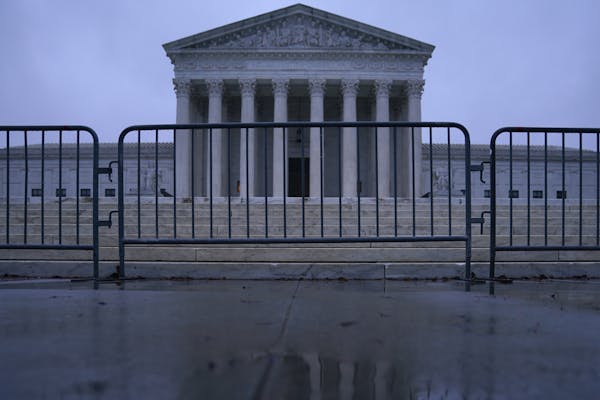One in eight Minnesotans is struggling to put food on the table as we face a pandemic and its impact on our economy.
For generations, Minnesotans have worked hard to nourish our communities. From the farmers who grow our food to volunteers who give time at a local food shelf, Minnesotans fight hunger every day.
Today, the need to help hungry Minnesotans is unlike anything since the Great Depression. With rising unemployment, children, the elderly, people of color and Native Americans are at especially high risk.
We need to work together to tackle the food insecurity challenge. Over the last seven months, Minnesota's network of food banks has distributed double the amount of food as in the same period last year. Organizations helping feed seniors have served seven times as many people as they planned for in 2020.
Individuals, businesses, and state and federal agencies have contributed more than $100 million. Restaurant workers and caterers have created new community kitchens. Businesses have found new ways to source and distribute food. And the state of Minnesota has directed funding to bolster the statewide food banks, deliver meals, and keep children fed during the summer months.
Still, food insecurity is expected to keep rising. As many as half of the Minnesotans who are eligible for SNAP assistance are not yet enrolled. With collaboration, creativity and commitment, we must take action to alleviate hunger, especially for those communities disproportionately impacted by COVID-19.
The state, the hunger relief community, and leaders from MBOLD – a coalition of Minnesota-based food and agriculture business, university, and entrepreneurial leaders—have joined community efforts to take on this challenge.
Together we will: Identify geographic areas and populations in greatest need of help, ensure that everyone who is eligible for SNAP is getting the benefits and scale up technology solutions to get food where it is needed most.
1. Using data to drive results. We will use data in new ways to target the areas of greatest need and spotlight opportunities to address racial equity in our food system.
2. Reaching people in need. More than 200,000 Minnesota households rely on SNAP each month. We can accelerate efforts to ensure everyone who is eligible is getting the help they need by making the process to access benefits as easy as possible and working to remove the stigma of hunger.
3. Working together. No single individual or organization can tackle this challenge alone. That's why public, private and community leaders are scaling up partnerships to increase the capacity of Minnesota's food relief network.
This is a true testament to Minnesotans' commitment to one another in challenging times. And we know that more will be needed as this crisis unfolds. As food and agriculture leaders, we will continue to identify and contribute financial resources to scale up the response across Minnesota. We encourage all Minnesotans to be part of the solution.
As the pandemic and recession continue, this winter will be among the toughest that Minnesota has ever faced. Please stay informed, offer a hand to relief organizations in your community and make a donation if you can.
Tim Walz is governor of Minnesota. Jeff Harmening, chairman and CEO, General Mills, and Stephanie Lundquist, executive vice president and president of food and beverage, Target, are co-chairs of MBOLD. This article was also submitted on behalf of Beth Ford, president and CEO, Land O'Lakes Inc.; Peter Frosch, CEO, Greater MSP; Joan Gabel, president, University of Minnesota; Rod Hebrink, president and CEO, Compeer Financial; Audrey Lucas, Minneapolis managing partner, McKinsey & Co.; Tamara Nelsen, executive director, Minnesota AgriGrowth Council; Sonya Roberts, president, salt group, Cargill; Shannon Schlecht, executive director, Agriculture Utilization Research Institute; Dimitrios Smyrnios, CEO, Schwan's Co.
